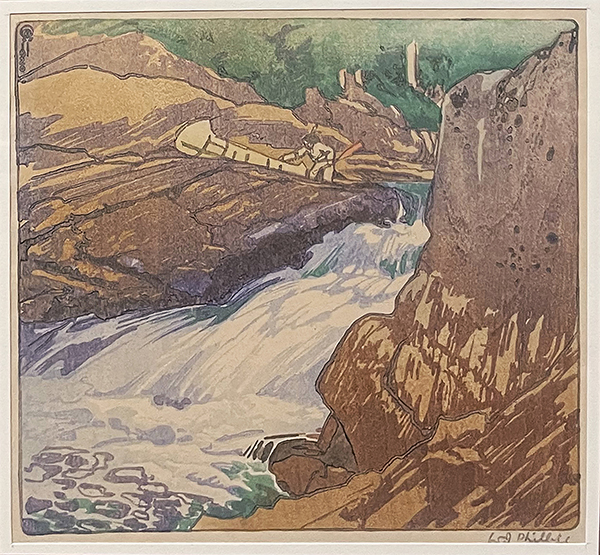Walter Joseph Phillips
Walter Joseph Phillips (1884-1963) - Artist Biography
Encouraged from an early age, Walter Joseph Phillips studied art in Birmingham before pursuing a career as a teacher and commercial artist. Despite enjoying early success as a watercolourist in Britian, Phillips emigrated to Canada, settling in Winnipeg in June 1913. He took up the position as art instructor at St John's Technical High School and quickly established himself in Winnipeg's young art community.
Phillips soon became friends with another expatriate Englishman, Cyril H. Barraud, who in 1915 imparted to Phillips a love for the technical craft of printmaking, and etching in particular. Upon Barraud's enlistment in the Canadian army, Phillips purchased his printing press and equipment. In 1917 Phillips began to teach himself colour woodcut printing in the manner of the Japanese artists and within 2 years he was catching the attention of the important British art magazine Studio. Throughout the '20s and '30s, Phillips was Canada's most famous printmaker, exhibiting throughout Britain, the United States and Canada, and joined many prestigious international printmakers societies.
Phillips influenced several generations of printmakers and almost single-handedly made the colour woodcut popular with artists across the country through the example of his work and the technical manual he wrote. In Winnipeg he not only taught many fine printmakers, he also became the city's chief art critic, writing a regular art column for the Winnipeg Herald. In 1926 he helped found the Manitoba Society of Artists.
In 1940 Phillips took up a teaching position at the Banff School of Art where he continued to teach until 1959. In 1941 he moved to Calgary and for a time taught at the Provincial Institute of Technology and Art. The flowering of printmaking on the western prairies can be attributed to Phillips's presence at both these schools.
A prolific artist, Phillips produced over 200 prints, many watercolours with subjects ranging from landscapes, still lifes and portraiture. He also illustrated several books.
Special Collections:
Glenbow Museum, Calgary, AB
Canada House Gallery, Banff, AB
Pavilion Gallery Museum, Winnipeg, MB
The Feckless Collection, Vancouver, BC
Artistic Technique: Phillips’s lyrical style was based directly on the tenets of Art Nouveau presented with the technical perfection of the Japanese prints that he so admired. The iconic York Boats on Lake Winnipeg, 1930, used decorative line and flowing, organic movement - all presented in a soft blend of colours - with the areas of grain from his carefully chosen wood showing clearly in the work. In 1929, he produced Karlukwees, BC, one his most beloved and beautiful images.



